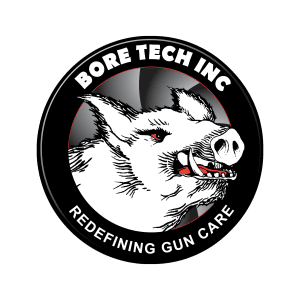Uncategorized
How to Choose the Right Ear Protection for Rifle Shooters
Shooting a rifle can be exciting, but it is also loud—really loud. That loud sound can hurt your ears if you do not protect them. If you are into rifle shooting, protecting your hearing is not just a good idea; it is absolutely essential. In Europe, using rifles without ear protection can lead to serious and permanent hearing loss.
For context, regular conversation is about 60 decibels. The noise from a rifle shot can easily exceed 150 decibels, which is way above the safe limit for human ears. That is why ear protection is so important for rifle shooters.
Ear protection for rifle shooters is not just another purchase; it is a necessity. Let us look at why ear protection is important, the options available, and how to choose the best one.
Why Ear Protection is Essential for Rifle Shooters
The sound of a rifle is more than just loud—it is dangerous. If you think you can tough it out, understand that each unprotected shot could mean long-term damage.
- Hearing Loss from Shooting Sports
- Legal and Safety Standards in Europe
It only takes one loud shot to cause irreversible hearing damage. Sounds above 85 decibels can harm your ears if you are exposed to them for long enough. Most firearms produce sounds well over 120 decibels. Rifles reach 150 decibels easily, which can cause instant damage.
Put simply, gunfire is like a grenade going off next to your ear. Once your hearing is damaged, you cannot bring it back to normal. Statistics show that many shooters develop tinnitus, a constant ringing in the ears, after years of unprotected shooting.
In Europe, strict safety laws are designed to protect firearm users. Many countries require people to use ear protection while shooting. Failing to comply could risk your health and lead to legal trouble. When you buy ear protection for firearms in Europe, look for products that meet the safety regulations.
Different Types of Ear Protection for Rifle Shooters
Not all ear protection is the same. Depending on your preferences and shooting environment, there are a few main options to choose from.
- Earplugs: Compact and Convenient
- Earmuffs: Maximum Coverage
- Combination Options for Maximum Safety
Earplugs are small and fit directly into your ear canal. They work well at reducing loud noises and are easy to carry around. Foam earplugs are budget-friendly and mould to the shape of your ears. Silicone versions last longer and are easier to clean. For the tech-savvy, electronic earplugs are available, which allow you to hear normal conversation while blocking harmful noise levels.
Earplugs are great for hunters and outdoor shooters as they are highly portable. However, they might not provide the same level of coverage as earmuffs.
Earmuffs offer full coverage by sitting over your ears. They are effective for reducing loud sounds and are often preferred by people shooting at ranges. Some advanced electronic earmuffs allow you to hear quieter sounds, like speech or the rustling of leaves, while still blocking out gunfire.
Earmuffs can feel bulky, and they might not fit perfectly with other gear like hats. However, they are reliable and offer superior protection.
Combining earplugs with earmuffs might be your best bet for extreme noise environments. This double protection is useful for shooters at indoor ranges where noise levels are amplified or for competitive events where firearms are fired repeatedly.
Factors to Consider When Choosing Ear Protection
Choosing the right ear protection involves more than just grabbing the first thing you see on the shelf. Take your time to think about your needs and the features that will matter most to you.
- Comfort and Fit
- Durability and Maintenance
- Noise Reduction Ratings (NRR): What You Need to Know
- Compatibility with Tactical Gear
You are likely to wear your ear protection for long periods, so comfort is essential. Earplugs should not feel too tight, and earmuffs should not squeeze your head. If they are uncomfortable, you might be tempted to skip wearing them, which defeats the purpose entirely.
Shooting gear takes a lot of damage. Make sure your ear protection is made from durable materials. Foam earplugs are disposable, but reusable options like silicone or electronic plugs should last longer if cleaned regularly. Earmuffs need occasional maintenance too—check the padding and ensure the electronics, if any, are functioning well.
Noise Reduction Rating (NRR) is a measure of how much noise the ear protection can block. Look for a product with a high NRR to ensure optimal protection. Most good-quality ear protection has an NRR between 22 and 33 decibels.
If you use hats, glasses, or other tactical gear, make sure your ear protection does not interfere with them. In Europe, many shooters also buy tactical belts for carrying additional equipment. Earmuffs with slim profiles can be a better fit when you are managing multiple pieces of gear.
Where to Find Quality Ear Protection and Tactical Gear in Europe
Finding ear protection that fits your needs and meets Europe’s safety standards is easier than you might think.
- Online vs. In-Store Purchases
Online shopping gives you access to a broader range of products, but it is easier to try out gear in person. It does not matter if you are buying ear protection or searching where to buy tactical belts in Europe, always check reviews and warranties when shopping online. For in-store purchases, you can test the fit and get personalised advice.
Final Thoughts
Proper ear protection is not optional for rifle shooters—it is a must. Firearms produce extreme noise levels that can cause permanent hearing loss. With options ranging from earplugs to earmuffs, there is something for everyone. Remember to consider comfort, durability, noise reduction ratings, and compatibility with your other gear.
In Europe, complying with legal safety requirements is just as important as finding the right fit. Take care of your ears—they are the only pair you have. Protect them every time you pick up a rifle.
























